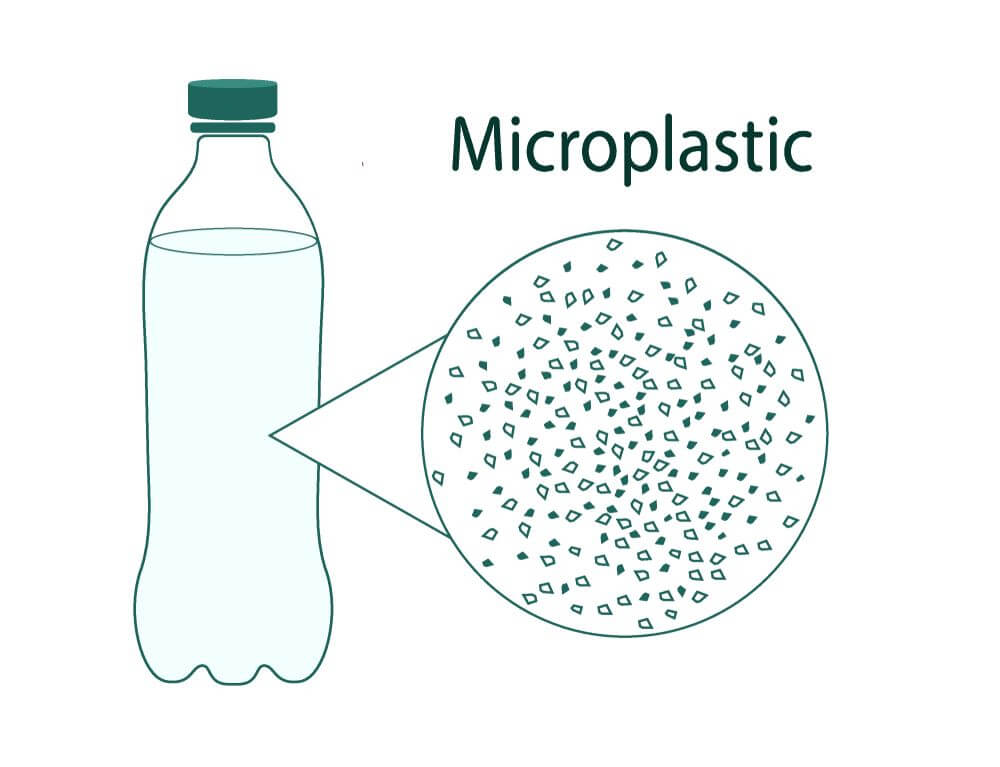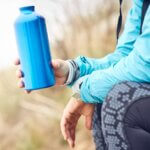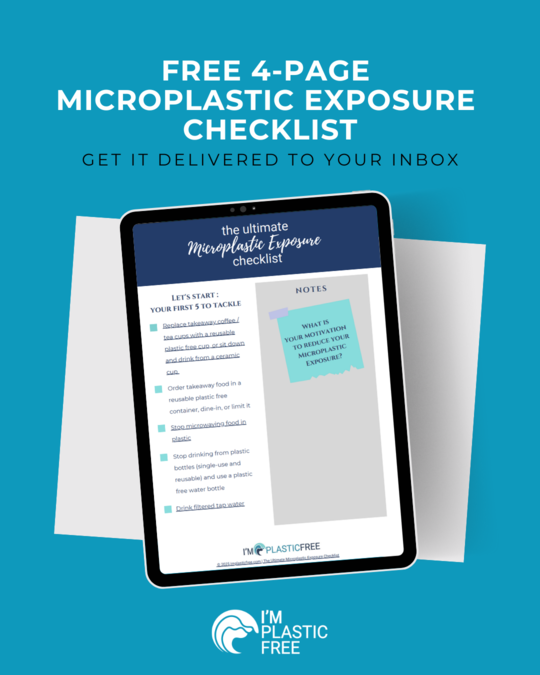Microplastics in Water Bottles – How Dangerous is It?

Most of us have tasted plastic when we bite into our favourite ice cream bar.
But how many of us know that drinking water plastic bottles contain plastic?
In this article we unpacke the research about bottled water in plastic.
Earlier Research: Microplastics Found in Plastic Water Bottles
A 2018 study published in Frontiers in Chemistry (1) should make us reconsider our consumption habits. Of the 259 total bottles analyzed, from 11 water brands, purchased in 19 locations, in 9 different countries, the study confirmed that 93% of the water bottles contained microplastics. Even more concerning is that we can see them with our naked eyes. There is real concern that discarded plastic may be polluting our drinking water. But what exactly are microplastics, and how worried should you really be?
Sherri Mason, a researcher at Penn State Erie, The Behrend College, analyzed 259 bottled drinking water from several countries in the above mentioned study. She concluded that more than 90% contained synthetic polymer particles. 11 of the samples are among the popular brands worldwide, and she found out that over 300 particles are present per litre of bottled water. This finding generated headlines for World Health Organization (WHO) at the time and called for further investigation regarding drinking water safety.
New Research: Bottled Water Contains Hundreds of Thousands of Nanoplastics
A 2024 study published in the Proceedings of the National Academy of Sciences analyzed the micro- and nanoplastics in three popular brands of bottled water. The researchers found that, on average, a liter of bottled water included about 240,000 tiny pieces of plastic (2). About 90% of these plastic fragments were nanoplastics. They also found that the total accounted for 10 to 100 times more plastic particles than seen in earlier studies, which mostly focused on larger microplastics.
Related: Use a Home Water Purifier or Test The Water?
What are Nanoplastics and Microplastics? They’re Everywhere
Microplastics are plastic particles smaller than 5 millimeters and are categorized as either primary or secondary based on their origin. Primary microplastics are manufactured at that small size, and the most common types include microbeads in personal care products like facial scrubs, toothpaste, and soap. Secondary microplastics are microscopic fragments of plastic that have decomposed from bigger plastic components, i.e. microfibers from synthetic fabrics like polyester.
Nanoplastics are plastic particles that range from 1 to 1000 nanometers (0.001 to 1 micrometer). As a comparison, a human hair is roughly 80,000 to 100,000 nanometers wide.
How Worried Should You Be About Microplastics in Your Water?

In another research mentioned by Phoebe Stapleton, assistant professor of pharmacology and toxicology at Rutgers University, it was found that microplastic contamination is present in U.S. groundwater (3). She further said that microplastics enter our body through ingestion and inhalation and can enter our bloodstream and organs. Even worse, pregnant women can pass the chemicals to unborn offspring.
“Unfortunately, we do not currently know the toxicological outcomes of these exposures,” Stapleton added.
Frederick Vom Saal, emeritus professor of biological sciences at the University of Missouri, remarked that plastics and chemical pollutants could lead to toxic effects, such as diabetes, heart disease, cancer, reproductive problems, and neural problems. Then he concluded that people should modify their plastics management techniques in light of our studies.
Related: Plastic Free Tea Bags: Which Brands Are Really Plastic Free?
How Do Microplastics End Up in Water Bottles?
The truth is that there are several ways microplastics can end up in water bottles. A primary source of microplastics is the manufacturing process, which can release microfibers into the air and water during production. For example, when plastic bottles are recycled and melted down for reuse, tiny plastic particles can escape into the air or water.
Microplastics may be part of the packaging itself — for example, if food or beverage companies use materials like polypropylene for their packaging that contain tiny pieces of plastic that break off over time as they’re used or handled.
Mason’s research demonstrates that tap water, beer, and sea salt contain microplastics. She also discovered that the majority of microplastics in water bottles were pieces of polypropylene (PP), a plastic-type used to produce water bottle tops. This indicates that bottling the water was the primary source of plastic pollution. Another factor is the frequency with which consumers purchase bottled water. In the United States alone, 50 million plastic bottles are purchased annually.
Mason recommended that instead of spending too much money on regular plastic bottle purchases, we could adopt plastic free reusable bottles and invest the money in water infrastructure so that everyone has access to water that is three times cleaner.
Related: 10 Benefits of Drinking Tap Water vs Bottled Water
How to Reduce Microplastic Exposure
Plastic is everywhere, and it’s not good for you in many cases. It can leach chemicals into your body, especially if you eat food out of plastic containers or store food in plastic containers. Here are proven tips on how to reduce microplastics in drinkable water:
- Purchase / install a plastic free water filter at home that removes microplastics and forever chemicals. This can be a countertop pitcher filter or a faucet filter.
- Buy foods packaged in glass, metal, or cardboard instead of plastic whenever possible.
- Don’t buy personal care products that contain microbeads if those products are available without them.
- Stop buying bottled water. Instead, buy a reusable water bottle, possible plastic free, and keep it at your desk or in your car.
- Skip straws when ordering drinks at restaurants or bars — most establishments will happily serve drinks without one if asked.
- Buy organic milk from glass bottles rather than plastic jugs.
- Avoid using plastic bags when grocery shopping or purchasing vegetables from local farmer’s markets.
Related: The Pros and Cons of Water Filters: What to Consider for an Eco-friendly Lifestyle?
Final Thoughts
Microplastic in water bottles is a problem we may have to deal with in the future. For now, it is something that we can be aware of and try our best to prevent. Consumers will remain sceptical until a greater demand for non-plastic water bottles is met, hopefully forcing the industry to look into more eco-friendly alternatives that are also better for your health.
These developments should continue to be watched as they could affect the public’s perception of water bottles and other plastic packaging in the near future.
References and Scientific Literature Sources
(1) https://www.frontiersin.org/articles/10.3389/fchem.2018.00407/full
(2) https://www.nih.gov/news-events/nih-research-matters/plastic-particles-bottled-water
(3) https://ngwa.onlinelibrary.wiley.com/doi/abs/10.1111/gwat.12862
—
Browse more articles related to microplastics.
Browse the I’m Plastic Free directory to discover plastic pollution solutions.




